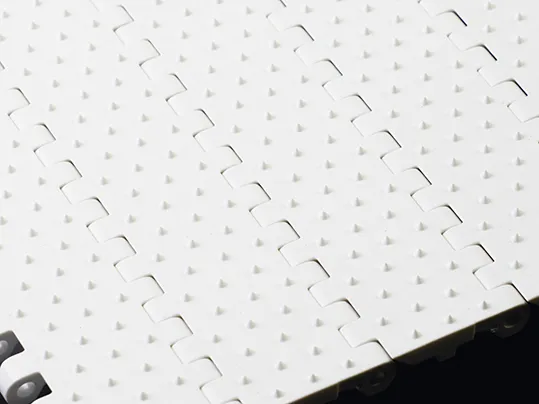Our belting solution
Chef Boyardee meats Prolink. The POM-CR series 6.1 was an immediate hit. Forbo’s belt was less expensive and performed better than the competitor’s product. There were some minor issues, which we addressed later on.
The second belt was modified to include PE cleats, which are more flexible in cold temperatures. It also included one row of blue PE cleats. This was done so that the operative could watch the belt rotate once to identify damaged cleats easily. The one row of blue cleats allowed the operative to just inspect the belt as it moved without having to count the rows of cleats. Once the blue cleats pass by twice, the inspection is complete. The last modification to the second belt involved widening the pocket by approximately 50%. This gave the operative a larger area to load the frozen block of meat into. The wider space reduced the risk of cleats getting broken and contaminating the ground meat.
The third (and final) generation of the belt started with changing it from a flat top to a cone top. The cone top’s peaks helped keep the block of meat in place as it ascended the incline. The belt was also changed to a blue base with blue cleats and one row of white cleats. This was done to make it stand out during the inspection process. A piece of blue belt or cleat is easier to see in the ground meat, possibly saving a particular batch from being wasted. The white belt material was chosen to blend in more easily with the ground meat. The purpose of the single row of white cleats was to assist operatives with inspecting the belt at given intervals so that they wouldn’t have to count flight rows.



